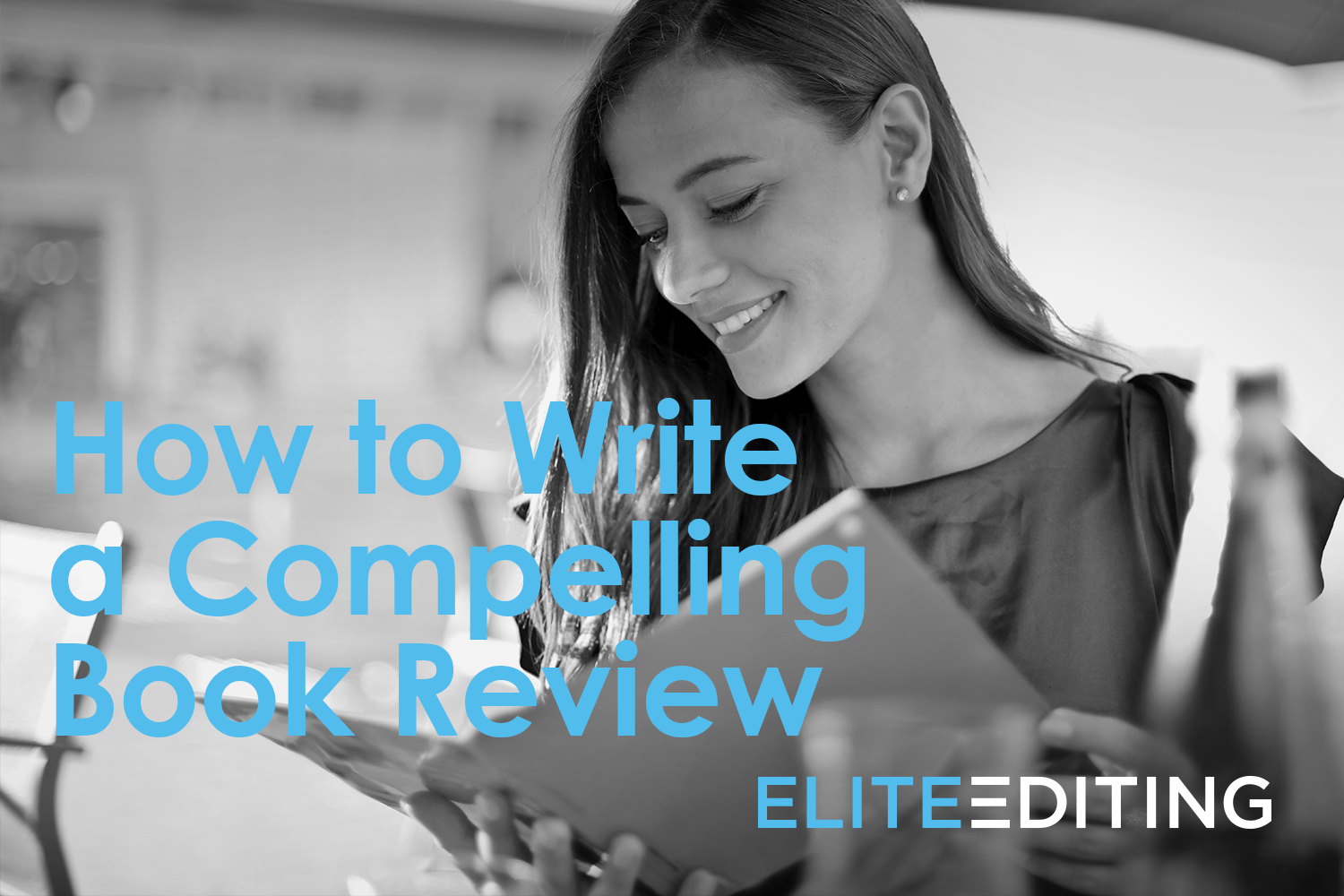Whether you’re writing for a magazine, your blog, or your social media accounts, it’s good to know how to write a compelling book review. Your book reviews can help build your business’s brand and bring readers to your blog or website. They can also grow your reputation as an expert on a certain subject. At the very least, they can help you connect with a community of people who enjoy reading and discussing the same types of books.
Clearly, learning how to write a great book review can help you achieve your personal and professional goals. In this post, we’ll discuss some book review writing tips such as building your book review argument, understanding your book review audience, and shaping your writing voice. We’ll also look at some book review examples. Good writing, above all, will get your book review noticed.
What Is a Book Review?
A book review offers a fact-based opinion for whether a book is or isn’t successful. This helps other people decide whether they want to read the book themselves. Although book review content will vary based on the book you’re reviewing and your opinion of it, all compelling book reviews share the same basic structure. We’ll look at this before we dive into our book review writing tips.
Clear argument
Unlike a book report, which really just summarizes a book, a book review is an opinion piece. This means that your book review will focus on the book’s strengths and weaknesses rather than what it’s about. As you’re learning how to write book reviews, remember that your book review argument should focus on a few exciting points and clearly present and support them.
Book review format
The basic book review format is easy to learn and remember.
The first part usually includes a brief summary of the book so readers know what the book is about (or remember it if they’ve already read it). In this section, you should give a basic overview of the book’s plot or main argument and a few notes about the book’s themes or thesis.
The second part is your analysis of the book. In this section, present your argument—or thesis—and include some quotes from the book to support it.
Lastly, you have the conclusion. Here, you should summarize your argument and provide your recommendation for whether readers should or shouldn’t read the book.
What Does a Good Book Review Look Like?
Now that we know the basic book review outline, let’s look at what makes a compelling book review and what makes an unhelpful one.
Critique vs. opinion
The most important aspect of how to write a book review is understanding the difference between critique and opinion. Compelling book reviews focus on critique, which provides an analysis of the book’s strengths and weaknesses. On the other hand, reviews that focus on your personal opinion of the book won’t help other people decide whether they are interested in reading the book.
Here’s an example of a critique-based review:
In Oliver Twist, Charles Dickens provides a glimpse into the lives of the poor and homeless in nineteenth-century London. His well-developed characters offer realistic portraits of members of the working class during this time and the extreme difficulties they faced. However, his lighthearted writing style brightens the story’s mood. Because of this, the book is both entertaining and informative.
As you can see, the above review focuses on the book’s story and writing elements and discusses how they make the book successful. This helps people decide whether they’d like to read the book themselves.
Now consider this opinion-focused book review example:
I enjoyed reading Charles Dickens’s Oliver Twist. The characters are memorable and made me laugh and feel sympathy for their difficult lives. I’m sure I’ll read this book again, and I recommend it to anyone who likes a story that’s both funny and emotionally moving.
Unlike the first example, this review gives only the reviewer’s personal opinion of the book and says almost nothing about the book itself. Unless other people have a reason to trust the reviewer, they probably won’t read Oliver Twist based solely on this review.
Analysis vs. summary
Similarly, as you’re learning how to write a book review, make sure you’re comfortable with the difference between analysis and summary. While a book report is only a summary, a good book review balances both summary and analysis. Here’s a breakdown of both:
A summary does exactly what it sounds like—it summarizes a book’s plotline (or main points if it’s nonfiction). While a book review should have some summary to help readers understand what the book is about, it shouldn’t be only summary.
On the other hand, an analysis examines the book’s story elements and writing style. It offers evidence—usually quotes and examples from the book itself—for whether these make the book strong or weak. This helps people who read your review decide if the book is worth reading.
Consider Your Audience: Who Will Be Reading This Review?
Once you’re comfortable with the basic book review format and what makes a compelling book review, the next step in how to write a book review is considering your audience. And part of considering your audience is crafting a writing voice that they will find appealing.
Voice
So many people read books and write reviews about them. That means it’s essential to use a unique and personal writing voice to help your book review stand out from the crowd. Don’t be afraid to let your personality show in your writing. If you follow the basic book review template, focus on objective analysis, and write using a compelling voice, you’ll be sure to get your book review noticed.
Audience
Your book review audience will vary depending on where your review will be published. Here are some examples of common book review platforms:
- Amazon: People reading book reviews on Amazon are likely deciding whether they want to buy a certain book. So a helpful Amazon book review will offer an informed recommendation for whether a shopper should invest in the book.
- Goodreads: While people reading book reviews on Goodreads are deciding whether to read a specific book, Goodreads is also a place where readers form communities around common book interests. So reviews on Goodreads could prompt engaging book-focused discussions.
- A journal or magazine: The audience of a book review in a journal or magazine depends on who reads that periodical. If you’re not sure what sort of book review audience you should expect, ask your editor or contact at the journal or magazine for some guidance.
- A blog: If you’re writing book reviews for your blog, you already know who your audience is. Get to know your readership and what they want to hear about the books you’re reading. You might even ask them what they like about your book reviews and what they’d like to hear more about.
Creating an Outline
Before you begin writing your book review, it’s a good idea to create an outline of the main points you want to address and thoughts you want to include in the review.
Outline questions
Here are some questions to consider as you’re creating your book review outline. You might even think about these questions while you’re reading the book so you can take notes.
- Is the writing clear, strong, and understandable?
- What are this book’s primary points? Are these presented successfully?
- Is this book original?
For fiction:
- What is this book’s genre, and does it fit the genre?
- Are the characters well developed?
- Is the story well paced and believable?
For nonfiction:
- What is this book about? Are the concepts clearly explained?
- What is the author’s argument, and is it successfully supported?
Writing Your Review
Once you have your outline, it’s time to start writing your book review. Let’s take a closer look at the parts of the basic book review template.
Introduction
Because your review should get to the point quickly, your opening line—or your hook—should catch readers’ attention and set the tone for the review. Some review writers open with a clever quip, a book quote, or a surprising fact from the book. Others go for a brief story of their experience reading the book.
Your introduction should also clearly state the book’s title, the author’s name, and maybe even some background information about the author.
Additionally, your introduction should include your thesis or argument—that is, your opinion of whether the book is or isn’t worth reading—which you’ll discuss in your review’s analysis section.
Summary
As we’ve already discussed, your book should include a summary of the book but only enough to give readers an overview. Focus on the book’s main plot points (for fiction) or arguments (for nonfiction), and briefly explain the book’s primary themes or thesis.
Argument/analysis
Your book review argument or analysis of the book should be the main part of your review. As someone who has read a certain book, you’re in a position to suggest to others whether they should also read it. This is what you’ll discuss in your analysis.
In your review’s analysis, work through the questions you considered while making your outline. Highlight the book’s strengths and weaknesses, and explain why you think the book is or isn’t a success. Give examples or direct quotes from the book to illustrate and support your argument.
Conclusion
To give your review a satisfying finish, summarize your main points in a succinct conclusion. Restate your argument, and offer your final recommendation.
Summary
Hopefully you’re now much more comfortable with the steps of how to write a book review. Here are the main things to remember as you’re writing your review:
- Take notes as you’re reading the book, and make an outline of your main points before you start writing your review.
- Focus on critical analysis rather than personal opinion.
- Don’t oversummarize.
- Discus the book’s strengths and weaknesses in an introduction, summary, analysis, and conclusion.
If you follow these book review writing tips, you’ll be able to easily write a review that clearly states your analysis and opinion—and maybe earns a great book a few new readers.
Resources:
https://www.thebalancesmb.com/how-to-write-a-book-review-1360677
https://writingcenter.unc.edu/tips-and-tools/book-reviews/








